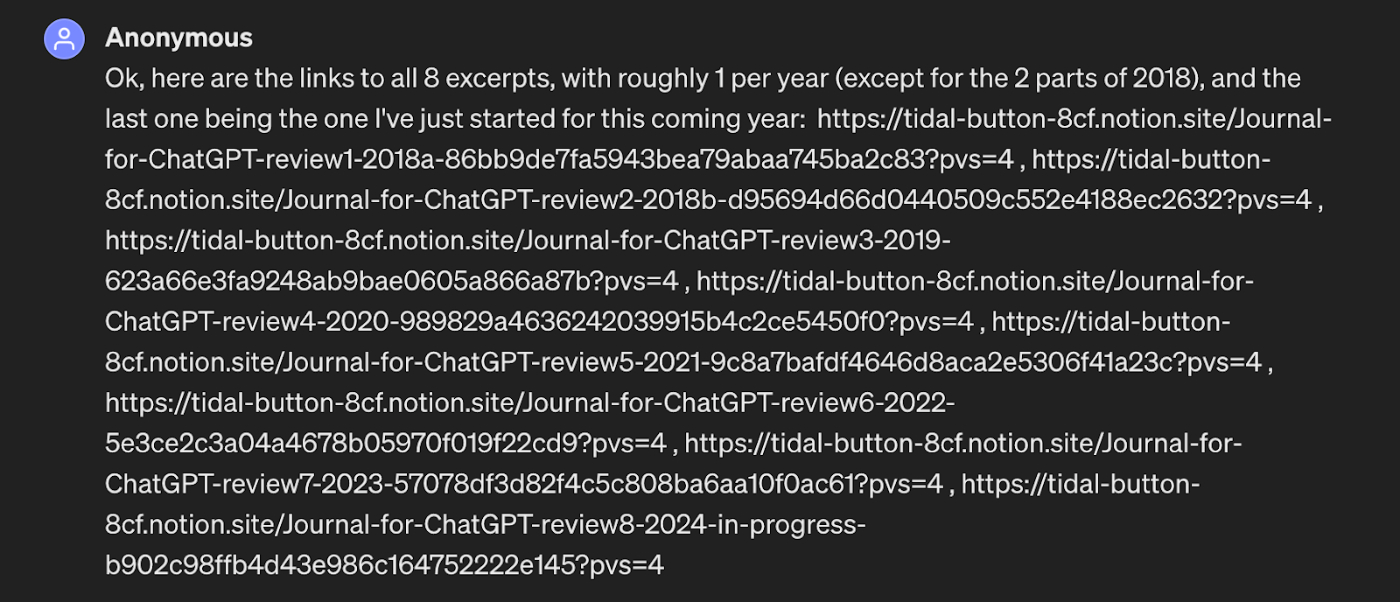
How to Use ChatGPT to Set Ambitious Goals
I followed Dr. Gena Gorlin’s prompts and had a breakthrough
I’ve been writing about how ChatGPT has changed how I see myself for about a year and a half. I think it’s the most important, broadly distributed tool for making psychological progress since the journal was invented. Dr. Gena Gorlin agrees. She’s a clinical psychologist who co-teaches a course with me on how to use ChatGPT for psychological growth. Recently she was a guest on my podcast, where we discussed how she uses ChatGPT for goal setting.
This is the first piece in a new series in which we share actionable, tactical ways that some of the smartest people in technology are using ChatGPT and other AI tools. Every contributor Rhea Purohit will be breaking down the conversations from my podcast and pulling out the prompts and responses—complete with screenshots. Read on to learn exactly how Gena uses ChatGPT, with specific prompts you can use to set and achieve ambitious goals. —Dan Shipper
I’ve never been consistent about setting goals for myself.
Even the prospect of sitting to write about my goals is mildly terrifying. I feel self-important and silly.
Besides, the few nuggets of valuable insight I have about myself, I’ve stumbled upon in conversations—warm, free-flowing dialogues with people I trust. Exchanges like these prompt candid, honest self-reflection I’ve never found on a blank Google Doc.
Instead of staring at a blinking cursor every December, when everyone around me seems to be deep in self-assessment, I just wait for one of these conversations to come along—maybe at a holiday party, a friend’s home, or a family gathering. The process is unstructured, disorganized, and entirely unpredictable. But it works.
This year, February rolled around and I was still waiting to have that conversation. But inspired by Dan Shipper’s interview with Dr. Gena Gorlin, I grabbed my laptop, filled up an oversized mug with coffee, and took matters into my own hands.
Gorlin is a clinical psychologist at the University of Texas at Austin who focuses on the psychological needs of startup founders. In the interview, Gorlin uses ChatGPT to conduct an incisive and systematic annual review and goal-setting session. She feeds ChatGPT her old journal entries, and it writes a year-by-year personal biography of her life, helps her set goals for the year ahead, and points out blind spots she might’ve missed in the half-decade of entries. It’s something out of a dream.
Testing this out myself, I entered the ChatGPT prompts that Gorlin used and—to my astonishment—found the conversation I had been waiting for. It was warm, free-flowing, and unlike the sporadic nature of the conversations with my human counterparts, I could talk to ChatGPT whenever I wanted to. It was an empowering exercise in radical self-betterment—a cause Gorlin fiercely swears by.
Would you like to give it a try?
A couple of quick notes before you dive in:
- Gorlin offers psychological coaching to startup founders. She uses a custom version of ChatGPT that she’s instructed to talk to her like a busy founder who doesn’t have time for small talk and gives it to her straight. The custom GPT is also programmed to refer to a framework Gorlin has developed.
- Before starting the annual review, Gorlin published her journal entries over the last five years as a Notion page, and used that link in her first prompt. This is a trick she uses when she wants to feed ChatGPT a large amount of information.
Okay, let’s begin. First, we’ll give you Gorlin’s prompts, followed by screenshots from ChatGPT. Our comments are peppered in using italics.
Gorlin: I'm working on my 2023 “year in review” and “intention-setting for 2024,” and I'm having trouble figuring out the best way to proceed with it. Here's a journal that includes my year-in-review and intention-setting entries for the past few years, as well as some miscellaneous journal entries in between: [link to Gorlin’s Notion]. Could you read through this journal, including my laundry list of highlights from 2024, and then suggest some ways to organize my thoughts from there?
ChatGPT categorized the significant themes from Gorlin’s journal and listed a few suggestions on how she could move forward. Here’s a slice of what it said.
All screenshots courtesy of Dr. Gena Gorlin.Gorlin likes ChatGPT’s approach but notices that it’s reading only about the first 20 percent of the journal entry she gave it. She decides to troubleshoot.
Gorlin: Sounds like you don’t have access to the full journal I’ve published on that page. Could you please tell me what’s the last line you can read on that page?
ChatGPT:
Gorlin asks ChatGPT how she can help it get around this limitation—in effect, how they can create a solution together.Gorlin: How do I make it so you can read the whole journal? Should I publish it on separate pages with a short excerpt in each, or can you think of another way?
Find Out What
Comes Next in Tech.
Start your free trial.
New ideas to help you build the future—in your inbox, every day. Trusted by over 75,000 readers.
SubscribeAlready have an account? Sign in
What's included?
-
Unlimited access to our daily essays by Dan Shipper, Evan Armstrong, and a roster of the best tech writers on the internet
-
Full access to an archive of hundreds of in-depth articles
-
-
Priority access and subscriber-only discounts to courses, events, and more
-
Ad-free experience
-
Access to our Discord community







